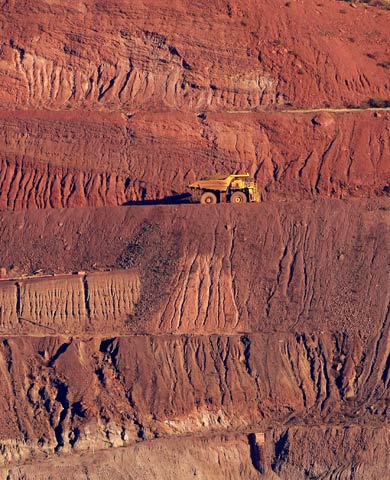Reactive Ground

Rock types that spontaneously combust, or catch fire in nature only require atmospheric oxygen for this to occur. A number of coal seams around the world have caught fire in this manner. Other rock types require the rock mass to be fractured - allowing atmospheric oxygen entry before they will react.
One effect of spontaneous combustion is the heating of the rock mass in excess of 600°C at a reaction site with elevated temperatures extending many meters from each site.
A blast hole drilled near a reactive zone may have elevated temperatures which will cause any explosive loaded into the blast hole to prematurely detonate. Also, anomalously high temperatures further away from the reaction may combine with explosive ground reactivity to cause premature detonation.
If the drilled rock mass is composed of a rock type that is ready to react, then the addition of an explosive composed of powerful oxidisers acts as a catalyst to the explosive rock reaction. As the reaction progresses, it liberates heat until a premature detonation occurs.
Although there are several strategies to deal with these problems, the first step is to accurately assess the temperature profile of a blast area.
Using the system described here is by far the fastest and most reliable detection method. Cycle times of 2 minutes per hole are easily achievable, and logs of holes are accurate and repeatable.